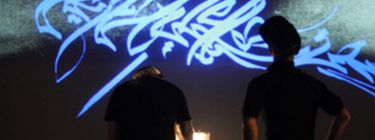
Connecting people and places
Susa Pop, co-founding director of Public Art Lab and Connecting Cities Network; Martijn de Waal, professor at the research group Civic Interaction Design at Amsterdam University of Applied Sciences, Berlin
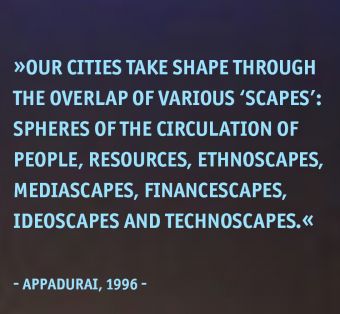
Connecting people and places
Why Cultural Led Urban Developments are necessary for Resilient Cities
Placemaking is a global civic trend in urbanism. However, a novel combination of arts, technology development and processes of urban governance empowers placemaking to be responsive and forms an essential contribution to a next renaissance of global cities. Not necessarily by making them less global as the following case studies show, but by bringing in a perspective of interconnected local publics and public values to urban policy, from the design of public spaces to the organisation of urban resource management and carbon-neutral cities.
Picture above: Digital Calligraffiti 2017-21 commissioned by Public Art Lab in cooperation with the artists Michael Ang, Don Karl and Hamza Abu Ayyash, Copyright by Michael Ang and Public Art Lab
Responsive Placemaking
Our cities take shape through the overlap of various ‘scapes’: spheres of the circulation of people, resources, ethnoscapes, mediascapes, financescapes, ideoscapes and technoscapes.1 The rise of new technologies and their accompanying practices in the past quarter of a century—from budget airlines to the internet—has intensified the flows in these various scapes and between them. Today we witness interlinked geographies of these scapes across the globe, making the world’s cities ever more interconnected. Hence, from the mid-1990s onwards, scientists, policy makers and mayors around the world increasingly started to think of our cities as part of networks of global cities, immersed in a space of flows, facilitating a worldwide creative class. However, as has become clear, these global cities did not only produce economic growth and innovations—from tech to finance—but also huge inequalities, both between and within cities, both economically and in terms of cultural and political equity.
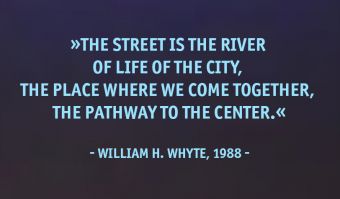
To address the tensions and inequalities that have arisen from the emergence of global cities, new approaches are needed that combine top-down urban policy with bottom-up ‘citymaking’ and centre around public values. Such an approach should not so much deny the interconnectedness of cities, the rise of digital networks, or the dynamic interaction between the various scapes. Rather, these should be embraced from a different perspective: a perspective that foregrounds civic relations and public values. In the past decade or so, digital and responsive placemaking has emerged as an approach that does exactly that. Digital and responsive placemakers understand our cities as ‘hybrid spaces’, simultaneously produced by their physical design as well as through their manifestations in virtual networks. The experience of a city is not just that of its buildings and monuments, its materialised institutions like city halls and local libraries and locally embedded cultural practices from weekly markets to critical mass bike rides. Increasingly, the ways in which the city is made up also include mediated versions of these experiences, through urban sensor data, social network practices and the search algorithms of digital map services, all reinforcing each other.
Responsive placemaking integrates this perspective with former ideas about placemaking that go back to Jane Jacobs and William W. Whyte and their groundbreaking visions and methodologies in the field of urban planning and architecture of the 1960s and 1970s. Revolutionary for their time, they brought out the importance of the seemingly trivial practices and rituals of everyday life for the success of cities, focussing on the street as a site in which social relations, trust and urban society could take shape. “The street is the river of life of the city, the place where we come together, the pathway to the center.”2
Responsive placemaking enhances such a perspective with new modes of representing and experiencing the city and the built environment and, more generally, time and space.
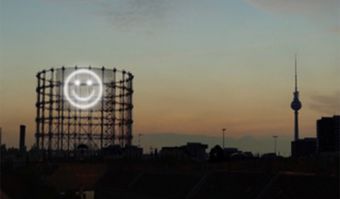
Picture above: Public Face I @Mood Gasometer, Berlin Schoeneberg, comissioned by Public Art Lab for the Media Facades Festival, Copyright by Julius von Bismarck and Public Art Lab
New Practices
Responsive placemaking can take various forms, and we’d like to highlight three of these here as examples of projects in which we have been involved ourselves.First, through projects of representation, responsive placemaking highlights the connections between people and places, and contributes to the construction of local publics. They can aid bringing out a ‘sense of place’ as well as a layered, variegated ‘sense of us’.
Second, as collaborative management and governance, responsive placemaking aims at providing these local publics with tools to organise themselves as collectives, addressing civic engagement and social inclusion. It seeks to set up alliances and coalitions of citizens, government representatives and professionals to organise around issues of communal concern, and the collaborative and inclusive management of local resources, from reusable energy communities to commons-based housing cooperatives.
And third, illustrating practices of translocal exchange and mutual learning, responsive placemaking does not approach local initiatives as isolated communities, set in their own time and place. Through the various scapes they are often part of various translocal movements and communities that enable mutual learning.
New Relevance of Translocal Communities and Mutual Learning
As such, in times of global pandemic, responsive placemaking becomes relevant in the context of border closures, spatial isolation, loss of mobility within and between cities, social distancing and quarantine measures. Although the pandemic has had devastating effects for individuals and societies globally, it is also an opportunity to rethink the ways we engage in intercultural dialogue and responsive placemaking in sustainable and equitable formats. As stated by Michele Acuto, director of Connected Cities Lab and professor of global urban politics in the School of Design at the University of Melbourne, “empowerment and community-building need to be at the heart of the digital lessons we are learning from COVID-19.“3 Although we are not travelling, we must work to understand better new types of transnational mobility. According to Federico Parolotto, in post-pandemic landscapes, hyper-mobility may be less feasible and therefore “digital connectivity will emerge as the most prominent transport technologies.”4 Although we are social beings, and most of us crave physical connectedness with others, the pandemic has revealed that we can and must continue to develop effective, inclusive and meaningful ways to connect digitally—novel forms of mobility.
Public Face: How does Berlin feel today?
Public Face5 is a showcase of responsive placemaking contributing to the representation of publics. It transformed a gigantic screen at the Gasometer in Berlin Schoeneberg into a ‘Mood Gasometer’ representing the emotions of the citizens in Berlin. It was developed for the Media Facades Festival6 in 2010 as a realtime data visualisation. The artist team Julius von Bismarck, Benjamin Maus and Richard Wilhelmer recorded and filtered the faces of the citizens with the newly developed software of facial recognition and transmitted the data of the dominating emotions of the group in the form of a emoji in real time on the big screen of the Gasometer with the question, „How does Berlin feel today?” By gathering data in public space, and by scraping social networks, these installations display collective ambiences and moods, communal spatial use patterns, and shared concerns back into public space through media installations. At the same time, and more critically, Public Face also establishes a critical public around the issue of urban surveillance.
Circulate
The Amsterdam-based project Circulate contributes to the design of local management and governance tools for urban publics, and in particular for resource communities. Increasingly, in the Netherlands and other parts of the world, citizens have started to organise themselves around sets of shared resources.7 Their motivation to do so is that they want to find alternatives to the extractive and unsustainable modes of production and organisation of many economic models, from housing to energy. Instead, they are looking for ways to share resources in a pro-social way, based on the principles of the commons, and to contribute to the production of renewable energy or the circular economy. New technologies such as urban sensors and database technologies such as distributed ledgers and smart contracts promise new ways to administer and govern these communities. Yet, the design of such digital platforms posts various questions that need to be resolved: To what extent is it a good idea to trade off privacy against transparency? To what private, collective or public goals should the set-up of a system be algorithmically tuned? For responsive placemaking to succeed, experimental designs of urbanism have only just begun.
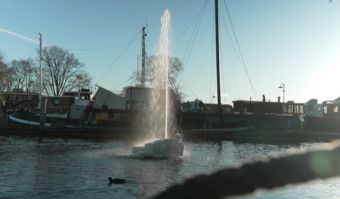
Picture above: Circulate. For the project Circulate. Designing Digital Platforms for Resource Communities, Design researcher Tara Karpinski made the Ener-geyser – a data fountain visualizing the energy use on a local grid in real time, as a conversation piece to discuss the values at stake in the algorithms that optimize energy exchange. Copyright by Tara Karpinsk and Public Art Lab
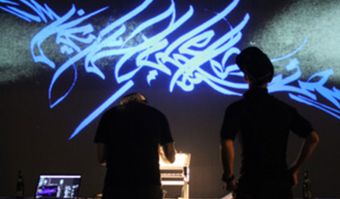
Picture above: Digital Calligraffiti 2017-21 commissioned by Public Art Lab in cooperation with the artists Michael Ang, Don Karl and Hamza Abu Ayyash, Copyright by Michael Ang and Public Art Lab
CONNECTING CITIES: Urban Screens mediate togetherness of distant publics
The European Lighthouse project CONNECTING CITIES8 explores translocal exchange through artistic practices, the networked infrastructure of urban screens, media facades and projection walls worldwide. Its goal is to engage citizens from distant places in new creative forms of togetherness and exchange. Under the guiding principle ‚Urban Screens are our Walls’, the CONNECTING CITIES NETWORK transforms these digital infrastructures into platforms and visualisation zones which provide new opportunities for communication, community building and translocal dialogue and telepresent scenarios in the public space by overlapping layers of virtual reality, augmented reality and networked society. For example, DIGITAL CALLIGRAFFITI9 allows all social groups to freely share their messages, wishes and visions on burning issues of our society. It combines the traditional cultural technique of calligraphy and graffiti with the possibilities of urban media art and new technologies. DIGITAL CALLIGRAFFITI transforms walls and digital screens into a canvas of civic expression to build bridges of intercultural understanding and promoting diversities as the medium to bring us closer.
A Vision for a Responsible Citizen-based Renaissance
The use of urban media technologies such as sensing and interaction technologies, social media, virtual and augmented reality tools and streaming solutions can strengthen community building and civic engagement in novel placemaking practices—such “responsive placemaking” promotes the democratisation of public space, facilitates public awareness about the urgencies of climate change with potential worldly resonance and enables the togetherness of people in dispersed and diverse locations. This multidimensional responsiveness of placemaking inserts citizen bottom up process in urban development of newly emerging resilient cities—such as the 100 Carbon-Neutral Cities in Europe til 2030—and will be part and parcel of Responsible Next Renaissance, responsive and responsible to its citizen-driven novel arts and technologies.
References
1 Appadurai, A. (1996). Modernity al large: cultural dimensions of globalization, volume 1. U of Minnesota Press.
2 William H. Whyte in City: Rediscovering the Center (1988)
3 Acuto, M. 2020, ‘Will COVID-19 Make Us Think of Cities Differently?’: https://newcities.org/the-big-picture-will-covid-19-make-us-think-cities-differently/
4 Federico Parolotto, F. 2020, ‘Mobility in the Age of Coronavirus’: https://newcities.org/the-big-picture-mobility-in-the-age-of-coronavirus/
5 Public Face is commissioned by Public Art for the Media Facades Festival 2010 http://connectingcities.net/project/mood-gasometer
6 Media Facades Festival 2010 is initiated by Mirjam Struppek and Susa Pop, Public Art Lab http://mediafacades.eu
8 The Connecting Cities Network is co-funded by the European Union / Culture Programme 2007-2013 and initiated by Public Art Lab http://connectingcities.net/
9 Digital Calligraffiti initiated by Public Art Lab in cooperation with Don Karl, Michael Ang and Hamza Abu Ayash
Susa Pop
Susa Pop is co-founding director of the platforms Public Art Lab and the Connecting Cities Network which contribute to creative citymaking, citizen science and translocal dialogue that empower social interactions and citizens‘ engagement. Susa Pop is an expert in investigating, curating, and producing artistic projects in the urban public sphere at the intersection of media arts, urban planning and digital naturalism. Best showcases include Mobile Studios, Media Facades Festivals, Urban Screens Innovation Forum, Connecting Cities, Future DiverCities, Digital Calligraffiti, Renewable Energy Avantgarde, Augmented Europe, Connecting Cinemas in Rural Areas. She holds lectures worldwide and gives seminars at the Bauhaus University Weimar / Media Architecture. She is co-editor of Urban Media Art Cultures (avedition, 2012) and What Urban Media Art Can Do – Why, When, Where, and How? (av edition, 2016). In 2017 she co-initiated the globally networked Urban Media Art Academy together with Tana Toft Ag in cooperation with the Goethe-Institut Thailand.
Picture © Ruthe Zuntz
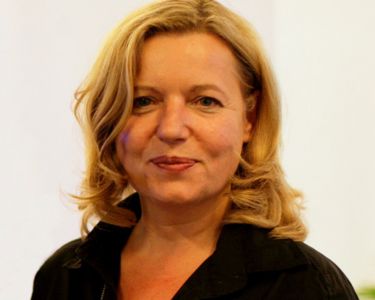
Martijn de Waal
Martijn de Waal is a professor at the research group Civic Interaction Design at the Amsterdam University of Applied Sciences. His work focuses on the experience of public spaces in a networked society and investigates the design of digital technologies from a perspective of public values. Recent research projects include The Hackable City on practices of collaborative citymaking; Circulate on the design of digital platforms for commons-based research communities and From Prevention to Resilience on the role of public space design in making neighborhoods more resilient in the aftermath of the Covid-crisis. He was the general chair for the Media Architecture Biennale 20. Key publications include The Platform Society. Public Values in a Connective World (Oxford University Press, with José van Dijck and Thomas Poell), The City as Interface. How New Media Are Changing the City (Nai010 Uitgevers) and The Hackable City. Digital Media and Collaborative City-Making in the Network Society (edited together with Michiel de Lange).

